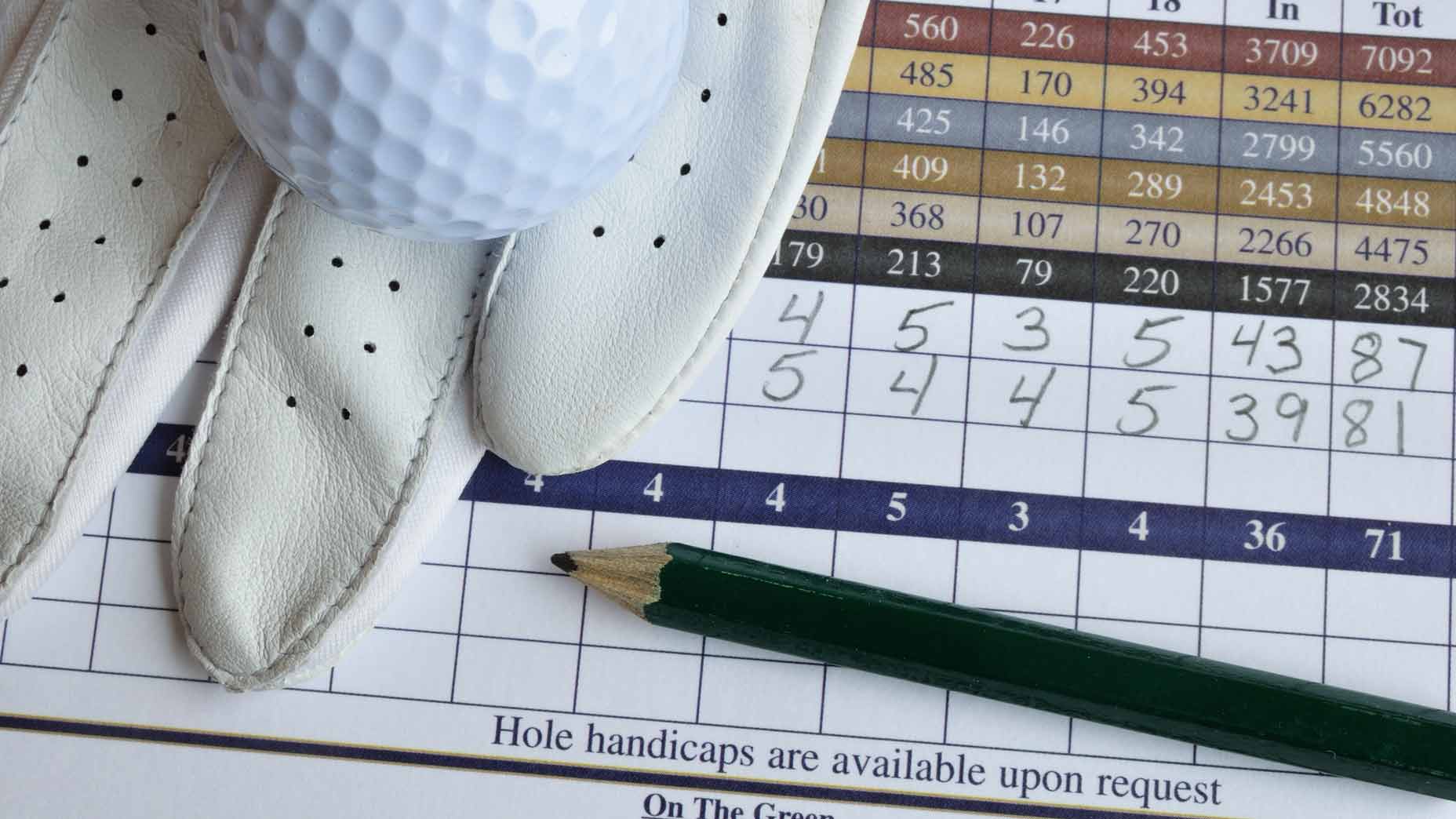Tour pros play a game that seems both foreign and familiar.
On the one hand, they abide by the same rules and use the same equipment as the rest of us (for now, at least, while a potential golf-ball rollback is still being discussed).
On the other, they are superior in every performance category. They hit the ball farther and straighter. They chip and putt with greater precision.
How much better are they than us ordinary duffers?
Unlike many sports, golf allows us to quantify the difference between pros and Joes.
The World Handicap System, as devised by the governing bodies, works just as well for the likes of Jon Rahm and Scottie Scheffler as it does for the chops in your weekend foursome.
Surf around on GHIN, the USGA’s handicapping management site, and you’ll find that pros make use of the system. Quite a few of them keep handicaps. The catch is that they don’t always keep them updated. Take Max Homa, for instance. He is listed on GHIN as a plus-9 index, playing out of the Plantation, a private club in the Palm Springs, Calif., area. But January was the last time he posted a score, and we know he has played a lot of golf since then.
What would Homa’s handicap index be if he kept it current? What about Rahm and Scheffler? And Brooks Koepka and Collin Morikawa and Cameron Smith, among other members of the game’s elite?
We wanted to know.
So, we gathered scoring data from 10 of the biggest stars in the men’s pro game (the top 9 in the Official World Golf Ranking, plus Brooks Koepka, who has been on a tear in recent majors) and asked our friends at the USGA to help us crunch the numbers. To arrive at handicaps for Rahm, Scheffler, Koepka, et al., the USGA used the same method that applies to all of us: They took the best 8 of each player’s most recent 20 rounds based on scoring differential (scoring differential being the score in relation to the difficulty of the course, as measured by the slope and course rating), and calculated the average differential.
What your Handicap Index *really* means, explainedBy: Josh Sens
Methodology
It should be noted that all 20 rounds were played in tournaments; the calculations did not take into account scores from any other rounds the 10 golfers might have played over the same time period, as those scores were not publicly available. Also, because Augusta National does not have a course or slope rating, scores from the 2023 Masters were not included.
Another note: The calculations were based on the course and slope rating from the championship distance of each venue, but they did not take into course setup, as specific ratings for those setups were not available either. In the case of the Mexico Open, where the tournament setup played longer than the longest-rated yardage for the course, the USGA used a procedure, known as Appendix G, that accounts for that differential.
In an ideal world, the more data the better. “We always want people to post all their scores,” says Lee Rainwater, the USGA’s director of handicapping, education and outreach. “And as a handicapping guy, I’d be especially interested to know all the scores these Tour pros are shooting, including the rounds they play with friends at their home club.”
How often should you match your handicap? Hint: not as often as you might thinkBy: Josh Sens
Even so, Rainwater said, it’s unlikely that those additional scores would alter Tour pro handicaps significantly, as the scores they are shooting are already so low, “it’s hard to imagine them going much lower.”
You can check out the handicaps below. Meantime, if you want another way to measure yourself against the world’s best, the USGA has produced this fun tool, which calculates what you would shoot this week at Los Angeles Country Club, host of the U.S. Open, based on your handicap and the estimated slope and course rating for the championship setup.
Tour Pro Handicaps
Through the Memorial Tournament (June 4)
(1*) Scottie Scheffler: +8.4
(2) Jon Rahm: +7.7
(3) Rory McIlroy: +6.3
(4) Patrick Cantlay: +7.4
(5) Viktor Hovland: +7.5
(6) Xander Schauffele: +7.8
(7) Max Homa: +6.5
(8) Matthew Fitzpatrick: +6.6
(9) Cameron Smith: +7.6
(13) Brooks Koepka: +8.2
*World ranking.












